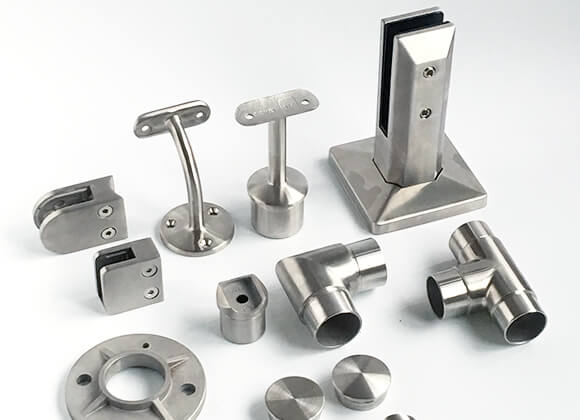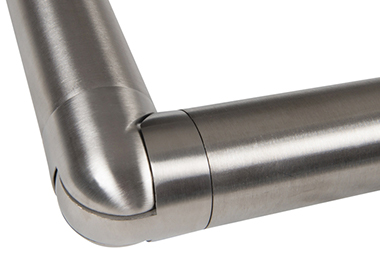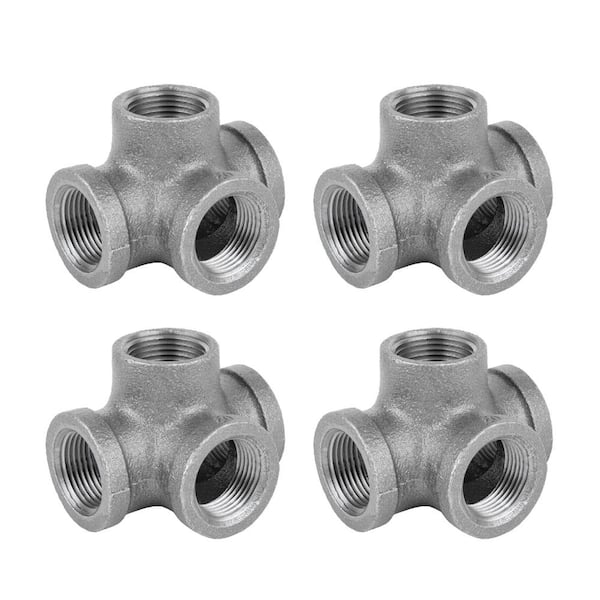Introduction to Decorative Pipe Fittings
Decorative pipe fittings have become a fascinating trend in both industrial design and home decor. Growing up, I remember my father using simple pipe fittings for various DIY projects, but it wasn’t until I took my first interior design class that I realized how these fittings could transform a space. Whether you’re renovating your home or just looking to add a stylish touch to your environment, decorative pipe fittings offer a unique blend of practicality and aesthetic appeal. In this guide, we’ll explore the various types, uses, and benefits of decorative pipe fittings to help you make informed choices.
What Are Decorative Pipe Fittings?
Decorative pipe fittings are components that connect pipes and help manage the flow of liquids and gases, all while enhancing the visual appeal of a space. They are available in various materials, styles, and finishes, allowing designers and DIY enthusiasts to choose options that suit their needs. Let’s dive deeper into the different types of decorative pipe fittings and their uses.
Types of Decorative Pipe Fittings
1. Elbow Fittings
Elbow fittings change the direction of a piping system. They can be found in various angles, mostly 90 and 45 degrees, and are available in materials such as brass, copper, and PVC.
Applications
Commonly used in plumbing, HVAC systems, and decorative installations.
2. Tee Fittings
Tee fittings connect three sections of piping, allowing for branch lines to be added. They come in various sizes and materials.
Applications
Widely used in plumbing systems and can serve as stylish solutions in furniture design.
3. Couplings
Couplings connect two pipes together. Decorative couplings offer a stylish option for visible pipework.
Applications
Often used in furniture design and visible plumbing installations.

4. Flanges
Flanges provide a flat surface for connection to various components; they are crucial in both industrial and decorative applications.
Applications
Used in structural and non-structural applications, including as part of aesthetic display solutions.
5. Caps and Plugs
Caps and plugs are essential fittings for capping the ends of pipes, with decorative options available for exposed fittings.
Applications
Used in crafting projects, plumbing, and as decorative pieces in furniture.

Benefits of Using Decorative Pipe Fittings
Incorporating decorative pipe fittings into your designs comes with a list of advantages:
- Enhanced Aesthetics: Decorative pipe fittings add character and style to any project.
- Versatility: Available in many materials and finishes that suit various design themes.
- Durability: Quality materials ensure long-lasting use, making them suitable for both residential and commercial applications.
- Cost-Effective: They can transform the look of a space without significant investment.
How to Choose the Right Decorative Pipe Fittings
Selecting the right decorative pipe fittings involves several factors:
1. Material
Choose materials that match or complement your existing decor. Common options include brass, copper, stainless steel, and PVC.

2. Style
Consider the overall style of your space. Modern designs might benefit from sleek metal finishes, while rustic styles may fit better with aged or raw finishes.
3. Size
Ensure you choose the correct sizes to fit your project. Measure the pipes accurately before purchasing.

4. Functionality
While aesthetics are important, don’t forget about the fittings’ functionality. Make sure they meet the requirements of your project.
Comparison of Decorative Pipe Fittings Materials
| Material | Appearance | Durability | Cost |
|---|---|---|---|
| Brass | Warm golden hue | Highly durable | Moderate |
| Copper | Rich, rustic patina | Very durable | Higher |
| Stainless Steel | Sleek and modern | Highly resistant to corrosion | Higher |
| PVC | Plain and utilitarian | Durable but less stylish | Lower |

Decorative Pipe Fittings in Home Decor
From industrial chic to rustic charm, decorative pipe fittings can elevate any space. Below are some inspiring ideas:
1. Furniture Design
Create tables, shelves, or even light fixtures using decorative pipe fittings. The exposed framework adds an industrial flair that many homeowners love.
2. Wall Art
Use decorative fittings to create unique wall art. The combination of lines and angles can create stunning visual effects.

3. Bathroom Accessories
Decorative fittings can also serve functional purposes in bathrooms, such as towel racks or soap holders.
DIY Projects with Decorative Pipe Fittings
Creating a Pipe Shelving Unit
This is one of the simplest yet most impactful projects you can undertake. With a few wooden boards and decorative pipes, you can create a stunning shelving unit.
Materials Required:
- Wooden boards
- Decorative pipe fittings (elbows, tees, flanges)
- Pipe sections
- Screws and wall anchors
- Paint/stain (optional)
Steps:
- Measure the space where you want to install the shelving unit.
- Cut the wooden boards to your desired lengths.
- Assemble the pipe fittings into a frame, securing with screws.
- Install the frame to the wall using wall anchors.
- Place the wooden boards on the frame.
- Paint or stain as desired to match your decor.
Pros and Cons of Decorative Pipe Fittings
Pros
- Add unique character and style to any design.
- Versatile and adaptable for various projects.
- Durable and resilient materials available.
- Easy to work with for DIY projects.
Cons
- Some materials can be more expensive.
- Installation may require special tools for certain fittings.
- Less traditional aesthetic may not suit all tastes.
FAQs About Decorative Pipe Fittings
What materials are decorative pipe fittings made from?
Decorative pipe fittings can be made from a variety of materials, including brass, copper, stainless steel, and PVC, each offering unique advantages and aesthetics.
Are decorative pipe fittings suitable for outdoor use?
Yes, but it’s essential to choose materials that are resistant to corrosion, such as stainless steel or treated brass, to withstand the elements.
Can I use decorative pipe fittings in plumbing?
Absolutely! Decorative pipe fittings can be used in visible plumbing applications while still serving their functional purpose.
How do I maintain decorative pipe fittings?
Maintenance will depend on the material; generally, wiping them with a damp cloth and mild detergent should suffice. For metals, consider periodic polishing to keep them looking new.